Photo
Ha ha ha. Why do I laugh? For that EXACT reason... I know someone (or a few people) who cannot get their head out of their phone. I am no angel though. :-)
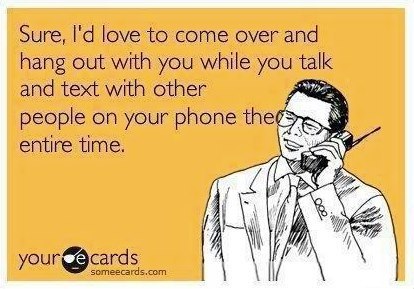
I think we all know that one person that cannot get their head out of their phone.
3 notes
·
View notes
Text
Great blog Jeff. Wow, I didn’t realise that about the Google Pixel 2 phone. Taking a photo and it tells you all about what you have taken a photo of. Gone are the days of the little drawers in libraries, looking up codes and locating a massive encyclopaedia or the likes to find something out. We have no excuse to be clueless really, do we? ha ha
Visual communities and social imaging
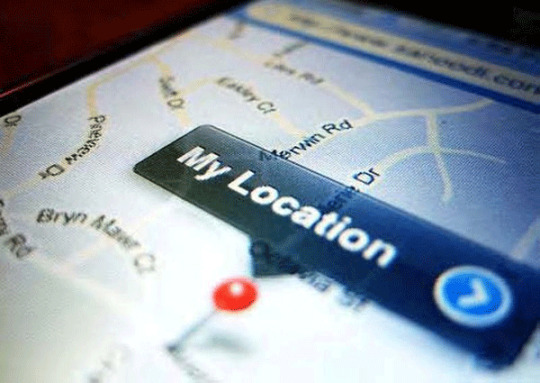
Week nine looked at visual communities and social imaging and the increasing part visual images play in social media today. With social media sites like Instagram for example, its possible, through the use of their mobile phone app, to take photos using your mobile phone and post them onto your Instagram account for all to see. One of the key affordances of Instagram is its location based service (LBS) or geotagging in other words. Geotagging with many of these social media platforms and their apps, has now become the norm. With the emergence in recent times of second-generation locative media, this is now becoming the default rather than the choice, (Hjorth, Pink 2014). Geotagging or LBS can be a good thing and a bad thing. If you are worried and concerned about privacy and ‘big brother’ looking over your shoulder, it could be a problem.
An example of a ‘good thing’ however is in the increasing availability of Mobile City Guides when travelling overseas. Facebook for instance with their mobile phone app has a ‘nearby places’ function in their main menu to explore things locally. The best of these apps work offline, without Wi-Fi, which enables the user to avoid expensive roaming charges when travelling overseas, (Schaal 2011). Basically, the app uses your phone’s GPS and compass features and then points you in the right direction for that restaurant or museum you are searching for. As someone who has been travelling overseas since the early 1980’s, when lugging around heavy travel guide books, maps, YHA guides to find accommodation among other items that just tended to lead to hair pulling, teeth grinding and the repeated use of foul language when inevitably hopelessly lost somewhere in a strange city. In theory, this is now a thing of the past. I’ve used a few of these recently and while not perfect, it sure beats the old days of lugging various heavy books around in your day pack when sightseeing!
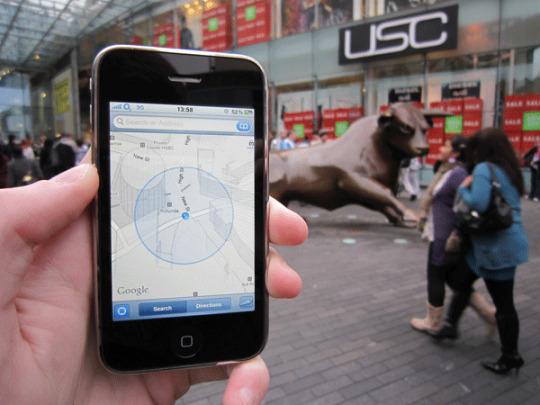
One I have used and has got some pretty good reviews on is Inviita. Here’s a short YouTube video on it:
https://www.youtube.com/watch?v=NAOGU-2o0OE
Some apps also, such as the camera function on the new Google Pixel 2 phone, has the option where you take a photo with your phone and it then uses that picture to tell you all about the photograph you’ve just taken. For instance, if you are at Agra in India, just take a photo of the Taj Mahal and it will tell you all about it. Very, very handy for the traveller on the go.
Jeff
References
Hjorth, L, Pink, S, 2014, New visualities and the digital wayfarer: Reconceptualizing camera phone photography and locative media, Mobile Media & Communication, 2014, Vol.2(1), pp.40-57, Sage Journals, http://journals.sagepub.com.ezproxy.lib.swin.edu.au/doi/abs/10.1177/2050157913505257
Hook, W 2009, ‘Geocaching’, flickr, (image), viewed 14 January 2018, https://www.flickr.com/photos/williamhook/4225307113
Schaal, D 2011, Mobile City Guides apps: Tours on your phone, USA Today, Oct 24, 2011, p.02B, ProQuest Central,
https://search-proquest-com.ezproxy.lib.swin.edu.au/docview/900288511/fulltext/62C91A0B1830455EPQ/1?accountid=14205
Wikipedia Commons 2015, ‘location’ (image), viewed 14 January 2018,
https://commons.wikimedia.org/wiki/File:USMC-12263.jpg
4 notes
·
View notes
Text
Wow! This is an interesting read. It takes gaming to a whole new level. See what I did there? :-)
Social Gaming with FB & EVE
Social gaming: how many of you play or engage with gaming online? The only game on the computer I ever played was Age of Empires (how much fun was that!) so I am not too familiar with the online gaming community! I will be diving into the Facebook gaming sensation and where it all begun!
‘Facebook opened its platform to developers in 2006 and it was ‘game on’ for social gaming—and arguably one of the reasons Facebook’s user base climbed so rapidly to its current 1.25 billion level.’ (Swinburne, 2017) Facebook has come a very long way since the days of “Farmville” (remember all of the annoying notifications we would get to join into the game?). “Facebook plays a critical role in how people connect to the games they love and share them,” the global games director Leo Olebe states. Social gaming is described as people interacting with one another online and involve chatting, trading etc. Facebook played a huge role in social media and online gaming but through my research this week one game I have been fascinated about is Eve Online.
Eve Online: https://www.eveonline.com/

Even online is a sophisticated space-themed massively multiplayer online game (MMO) with an economy and living communities which was released in 2003. It has half a million subscribers and encourages player participation in game 78 VOLUME20 NUMBER1 MAR2014 management (Zwart, 2014).
‘The game is renowned for its scale and complexity with regards to player interactions — in its single-shard game world, players engage in unscripted economic competition, warfare, and political schemes with other players.’ (Savage, 2016) EVE is a whole universe in itself where players call the shots, it is simply peerless. No other developer has attempted or even managed to pull off a similar online game.
Online games have similar rules to those which are played in reality. If players do not follow the rules they will be banned from the game or even removed completely. EVE recently suspended a player known as ‘The Mittani’ from the game in relation to comments he made about another player. It was a thirty day suspension because he breached the terms of service. This has generated significant controversy in the associated game media. (Zwart, 2014) Another player was suspended in 2009 when they hacked an enemy’s corporation to find valuable blueprints – this is all too nerdy for me I think! Check out the website, even for me EVE Online looks pretty damn cool..
References
EVE Online, 2014, viewed 3 August 2016, <www.eveonline.com>.
Savage, P 2016, The 50 most important PC games of all time, viewed 26 January 2018, < http://www.pcgamer.com/most-important-pc-games/10/>.
Zwart, M & Humphreys, S 2014,’ The Lawless Frontier of Deep Space: Code as Law in EVE Online’, Cultural Studies Review, vol. 20, no. 1, pp. 77-99.
Image
Avard, A 2017, That Big Million Dollar EVE Online War Happened, viewed 25 January 2018, http://www.gamesradar.com/the-next-big-eve-online-war-is-about-to-break-out-and-it-could-cost-one-million-dollars-wait-what/>
7 notes
·
View notes
Text
Blog 8 – Game on
Life really is a game for some people. Personally, I have never considered myself a gamer. Back in the days of computer games, video games, TV games and even arcades (which I know are still ‘a thing’ today), gaming is not something that has ever interested me. But like everything else, with the rise of social media, social gaming has also undergone a massive revolution right before our very eyes. Not many games can be played if you don’t have a username and password for a social media site.
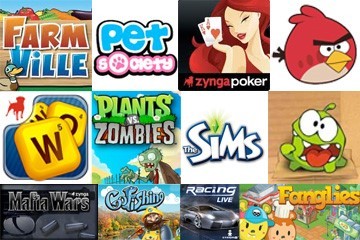
But how social have online games become? According to Swinburne Online (2018), “the term 'social games' has come to refer to those games specially made for, and profiting from, social network sites like Facebook.” Let’s look at some interesting statistics around gaming in the US.
Frank (2016) states that in an annual report published by The Entertainment Software Association, and after surveying 4,000 households, some gaming habits were:
63 per cent of US households include a minimum of one frequent gamer.
65 per cent of households own a video game-playing device.
48 per cent of households own a ‘dedicated game console.’
47 per cent of gamers are aged between 18 and 49 years old.
The average male gamer is 35 and the average female gamer is 44.
59 per cent of frequent gamers are male.
56 per cent of gamers play on a PC, 53 per cent on dedicated consoles and 36 per cent on smartphones.
54 per cent of gamers play with other people, including friends (40 per cent) and family members (21 per cent).
Online gamers spend, on average, 6.5 hours per week playing with others.
Consumers spent $23.5 billion on gaming in 2015
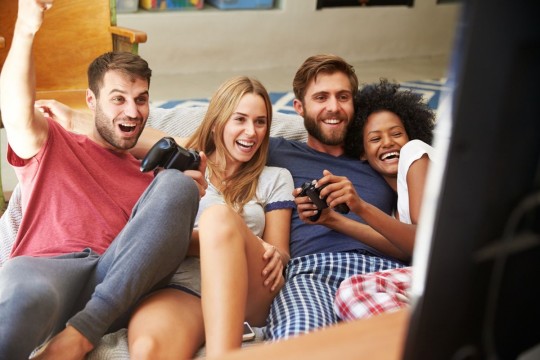
I think it’s safe to say that social gaming is pretty popular in the US. But it’s not all fun and games as such. According to Humphreys (2014, pp. 78-79), online environments, such as MMOgs, are often referred to as contractual environments. There are rules and limitations around conduct. They are determined by the very one-sided end user licence agreement (EULA) the player has to accept to enter into in order to access the gaming platform (Humphreys 2014, pp. 78-79). Game rules used to be loose guidelines (often on a physical playground) to ensure fair play for all participants, these days its actual online contracts gamers willingly enter into in order to get their gaming fix.
The question is though: As is always the case with social media, are these so-called ‘social games’ encouraging us to be more sociable in the virtual world and less available in the real one? And are they just another way of messing with our heads?
On that note, here’s some food for thought...
https://www.youtube.com/watch?v=XAgyR9Gwcp0
References
Frank, A 2016, Take a look at the average American gamer in new survey findings, Polygon, viewed 28 January 2018, <https://www.polygon.com/2016/4/29/11539102/gaming-stats-2016-esa-essential-facts>.
‘Households are under control in the US’ [image], in Polygon 2016, Take a look at the average American gamer in new survey findings, Polygon, viewed 28 January 2018, <https://www.polygon.com/2016/4/29/11539102/gaming-stats-2016-esa-essential-facts>.
Humphreys, S 2014, ‘The Lawless Frontier of Deep Space: Code as Law in EVE Online’, Cultural Studies Review, vol. 20(1), pp. 77-99.
Russkiipatsan 2009, GGM – Gamer Gone MAD, 24 June 2009, viewed 28 January 2018, <https://www.youtube.com/watch?v=XAgyR9Gwcp0>.
‘Social gaming – plenty to choose from’ [image], in Game Overdrive 2018, What are social gaming?, Game Overdrive, viewed 28 January 2018, <http://www.game-overdrive.com/2017/social-gaming/>.
Swinburne Online 2018, ‘Week 10: Social gaming – playing the crowd’, MDA20009, Digital Communities, learning materials on Blackboard, Swinburne Online, January, viewed 28 January 2018.
8 notes
·
View notes
Text
Blog 7 - Picture this…
I remember my mum regularly having to buy a film for her camera (like the one pictured below). Then when she took a photo, she had to wind her up camera in preparation for another photo. Once the film was full, she had to take it to a shop to have the photos developed. Sometimes it would be weeks before we could actually see what we had taken photos of. And if that doesn’t sound crazy enough, sometimes she would put the film in the cupboard or a nearby drawer and forget about it for months, even years.

Times have changed considerably since then. With the developments in not only camera technology and digital imaging, but the rise of mobile cameras and social media, we are definitely witnessing a massive revolution in personal and social imaging (Swinburne Online 2018). Personal photography is ubiquitous. You can’t go anywhere without seeing someone, or a group of people, photographing or videoing their activities/location. Needless to say, whatever it is they have photographed or videoed is uploaded to one or more social media platforms within seconds.
In Herrman (2018), reference is made to Snapchat founder Evan Spiegel as saying, “you are the sum of your published experience” and that the selfie “makes sense as the fundamental unit of communication on Snapchat because it marks the transition between digital media as self-expression and digital media as communication.” It would appear that more and more, we are choosing to communicate through our photos and videos.
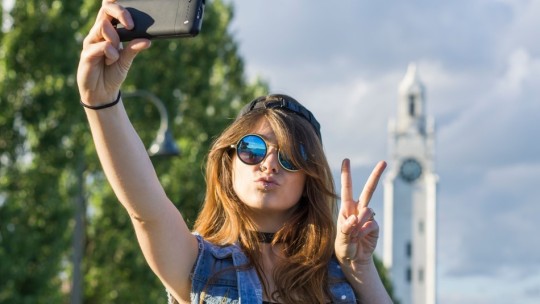
But is it all going too far though? Sometimes I definitely think it is but instead of letting it wear you down, sometimes it’s best to just laugh it off and watch people making fun of it.
https://www.youtube.com/watch?v=0M7GTf0baQU
Swinburne Online (2018) refers to ‘networked visuality’ as a term used to make sense of the way imaging has most certainly become an important part of the makeup and maintenance of social networks. It goes on to discuss selfie culture and the rise of the selfie as being “a prominent part of the rise of ubiquitous photography and social imaging” (Swinburne Online 2018). Anyone can do it. And you don’t even have to wait to be noticed or found. All you have to do is tag. As mentioned in Swinburne Online (2018), tagging adds information to an image but it also makes images easier to search and connects them to various things – events, places, people, you name it (or tag it). Tagging then is just another “way of finding and being found” (Swinburne Online 2018).
Is anything private anymore? I think not. All you have to do is… picture it (literally).
References
Herrman, J 2014, Meet The Man Who Got Inside Snapchat’s Head, Buzzfeed News, viewed 28 January 2018, <https://www.buzzfeed.com/jwherrman/meet-the-unlikely-academic-behind-snapchats-new-pitch?utm_term=.thR7kXp89#.mwBXdDZo0>.
‘Selfie craze’ [image], in Mashable Australia 2017, Japanese researchers: your peace-sign selfies are putting you at risk, Mashable Australia, viewed 28 January 2018, <https://mashable.com/2017/01/11/stolen-fingerprints-peace-signs/#Y5RZcaBbkmqz>.
Smosh 2014, Addicted to Selfies, 6 June 2014, viewed 28 January 2018, <https://www.youtube.com/watch?v=0M7GTf0baQU>.
‘Step back in time – roll of film for a camera’ [image], in Guide to Film Photography 2013, 35mm, Medium Format, and Large Format Film Photography, Guide to Film Photography, viewed 28 January 2018, <http://www.guidetofilmphotography.com/photography-film-types.html>.
Swinburne Online 2018, ‘Week 9: Visual communities and social imaging’, MDA20009, Digital Communities, learning materials on Blackboard, Swinburne Online, January, viewed 28 January 2018.
1 note
·
View note
Text
Blog 6 - And the tweets came flooding in
The internet isn’t all bad. When it comes to social media, it’s not only activists, protesters and trolls who can fist pump and say:
“Mission accomplished!”
When natural disasters strike, all too often communication systems go down just when they are needed most (Swinburne Online 2018). When ‘safety in numbers’ is what you’re after, social media can be “vital in delivering precise, timely information, and for organising action” (Swinburne Online 2018).
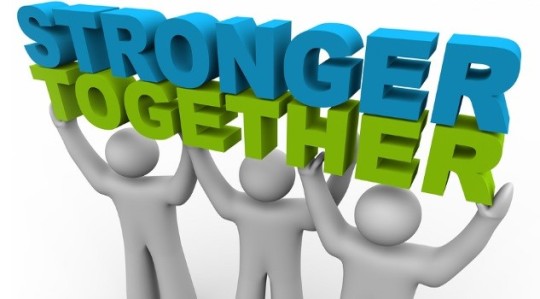
Let’s look at the role social media, and in particular Facebook and Twitter, played in the south-east Queensland Floods of 2011. In the research report compiled by Bruns et al. (2012, p. 7), it states that Twitter was used extensively to disseminate and share important crisis information and updates from state and local authorities as well as everyday citizens.
The report goes on to list some key findings from their research into the important role of social media in crisis communication for emergency services in particular:
Social media can definitely play an important role in crisis communication and emergency management.
The use of social media for crisis communication is still emerging.
The use of different social media platforms in crisis situations needs further evaluation. Every platform has different strengths and weaknesses and should be carefully selected for the task at hand.
An established presence on Twitter is important.
Coordination between different emergency and government departments, and with media organisations, is vital in avoiding conflicting messages and ensuring safe and accurate delivery of key information.
Social media should be treated as a two-way communication tool.
Approaches to crowdsourcing crisis-relevant information should be trialed in collaboration with technology and research partners.

As mentioned in the report by Bruns et al. (2012, p. 12), the south-east Queensland floods of 2011 were considered a major environmental crisis. This natural disaster was covered on a large scale by the Australian and international mainstream media. Bruns et al. (2012, p. 12) states that when the floods started to impact on major population centres, social media platforms such as Facebook and Twitter, and also content sharing websites Flickr and YouTube, began to play a very important role in the distribution of first-hand footage of the ever-growing intensity of this natural and frightening disaster.
Where traditionally, emergency information was distributed through radio and television, today more innovative means are now becoming available to both facilitate and improve the flow of important information among communities when and where it is needed (Swinburne Online 2018).
But is it a good idea to use social media in times of crisis? If managed correctly and wisely, the short answer is yes!
https://www.youtube.com/watch?v=gyHfF55Ly1A
References
Bruns, A, Burgess, J, Crawford, K, Shaw, F 2012, ‘#qldfloods and @QPSMedia: Crisis Communication on Twitter in the 2011 South East Queensland Floods’, ARC Centre of Excellence for Creative Industries and Innovation, pp. 1-58.
‘Crisis communication on social media’ [image], in Arizona Capitol Times 2012, Tweet, delete, repat: Politicians turn a microscope into a megaphone, Arizona Capitol Times, viewed 2 February 2018, <https://azcapitoltimes.com/news/2012/06/04/tweet-delete-repeat-politicians-turn-a-microscope-into-a-megaphone/>.
‘Stronger together’ [image], in Inside Small Business 2016, Safety in numbers recommended for SMEs, Inside Small Business, viewed 27 January 2018, <https://insidesmallbusiness.com.au/planning-management/safety-in-numbers-recommended-for-smes>.
Swinburne Online 2018, ‘Week 8: Crowdsourcing in times of crisis’, MDA20009, Digital Communities, learning materials on Blackboard, Swinburne Online, January, viewed 27 January 2018.
The Hodges Partnership 2017, #AskJon: Is it a good idea to use social media in times of crisis?, 12 April 2017, viewed 27 January 2018, <https://www.youtube.com/watch?v=gyHfF55Ly1A>.
3 notes
·
View notes
Text
Blog 5 - Let the truth be trolled
We all love a bit of trolling and social media conflict… NOT!

I doubt many people can honestly say they haven’t fallen victim to social media conflict or experienced the wild and obnoxious ways of an online troll. I know I certainly have and it’s hard to be thick skinned enough to brush it off without it hurting… even if just a little. According to Quach (2017), a study conducted in 2016 by the US Center for Innovative Public Health Research “found that 72 per cent of Americans over the age of 15 had witnessed online harassment, and 47 per cent had directly experienced it.” Quach (2017) goes on to say that online trolling affects 140 million people in the US alone, and has affected many others around the world too.
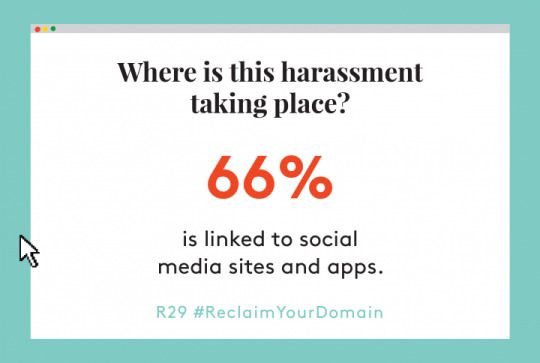
But what is a troll?
According to Moreau (2018), Urban Dictionary’s top rated definition for trolling is:
“Being a prick on the internet because you can. Typically unleashing one or more cynical or sarcastic remarks on an innocent by-stander, because it's the internet and, hey, you can.”
https://www.youtube.com/watch?v=6Zxy_dScjsM
Moreau (2018) goes on to say that Wikipedia defines trolling as:
"Someone who posts inflammatory, extraneous, or off-topic messages in an online community, such as a forum, chat room, or blog, with the primary intent of provoking readers into an emotional response or of otherwise disrupting normal on-topic discussion.”
According to Moreau (2018), internet trolls can be found in many places including:
YouTube video comments
Blog comments
Forums
Email
Social media/social networking sites
Anonymous social networks
If, for example, I was to shift my focus onto YouTube, it would be suffice to mention some rather interesting statistics released by Pew Research Centre. As of May 2011, a whopping 71% of adult internet users in the United States were reported to view videos through YouTube and/or Vimeo (McCosker 2014, p. 201). With an audience that large, YouTube is definitely a place you can almost guarantee to bump into an online troll.
https://www.youtube.com/watch?v=ad6kxfoSSr8
And for anyone who has a trolling tendency, it is so easy to do. As Moreau (2018) says, everyone and anyone can do it and it can be done from a secure, isolated place that doesn’t involve any physical interaction with other people. It is easy for a troll to hide behind their computer screens and empower themselves in any way they see fit. “Trolling makes a lot of cowardly people feel stronger” (Moreau 2018). Unfortunately though, a troll’s so-called strength is their victim’s pain and suffering.
If the truth be trolled, it’s really not nice!
References
AsapSCIENCE 2016, The Science of Internet Trolls, 17 January 2016, viewed 26 January 2018, <https://www.youtube.com/watch?v=6Zxy_dScjsM>.
‘A troll in action’ [image], in The Register: Biting the Hand that Feeds IT 2017, Google to annihilate online trolling with… tra-la-la! Machine! Learning!, The Register: Biting the Hand that Feeds IT, viewed 27 January 2018, <https://www.theregister.co.uk/2017/02/24/google_and_jigsaw_tackle_online_trolling/>.
McCosker, A 2014, ‘Trolling as provocation: YouTube’s agonistic publics’, Convergence: The International Journal of Research into New Media Technologies, vol. 20(2), pp. 201-217.
Moreau, E 2018, Internet Trolling: How Do You Spot a Real Troll? How internet trolling affects us all online, Lifewire, viewed 26 January 2018, <https://www.lifewire.com/what-is-internet-trolling-3485891>.
Quach, K 2017, Google to annihilate online trolling with… tra-la-la! Machine! Learning!, The Register, viewed 27 January 2018, <https://www.theregister.co.uk/2017/02/24/google_and_jigsaw_tackle_online_trolling/>.
‘Trolling on social media’ [image], in Refinery29, The Internet Problem We Don’t Talk Enough About, Refinery29, viewed 27 January 2018, <http://www.refinery29.com/online-harassment-statistics-infographic>.
Weber 2015, How The Troll Stole YouTube, 22 December 2015, viewed 27 January 2018, <https://www.youtube.com/watch?v=ad6kxfoSSr8>.
0 notes
Text
Blog 4 – Social media: A power tool
Digital citizenship can further be expanded to include activism and protest. In this digital age we currently live in, it is suffice to say that social media platforms are increasingly, and successfully, being used by activists and protesters alike as some sort of power tool by which to showcase (and highlight) their causes. In doing so, activists and protesters are also increasingly able to perform on what is perceived as a global stage and gain the attention of a less localised and much larger, audience.
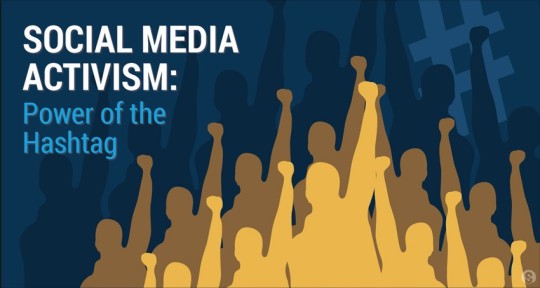
Conservationists, activists, protesters, advocates, CEOs of companies… the list is endless when it comes to those who utilise social media platforms as a channel to get their message across (Fleming 2016). And when used correctly, it’s a pretty powerful tool to have at your disposal.
Youmans and York (2012, p. 325) refer to six strategies activists in particular may “use to maintain or even enhance social media as tools for collective action.”
They can:
Exert their power as consumers by using new social media platforms all at once.
Attempt to use the law by applying the latest legal principles to create new ways of rectifying unwanted issues derived from social media companies putting their users at risk.
Appeal directly to the government in countries claiming to have a commitment to open internet and democratisation.
Work to advance industry self-regulation.
Pressure large social media organisations via long-term, iterative advocacy.
Embrace the development of digital citizenship.
There is absolutely no doubt that activism and protest predates the internet but when considering the contexts of activism and protest across the globe today, it is crucial to look at the role social media lay in such a widespread concept. According to Cammaerts (2015, p. 7), increased transnationalisation is just one of the many ways in which social media are impacting on social movement, activism and protest and as a result, transnational social networks are becoming more virtual, more fluid, more decentralised, and certainly more global. In the past we had no choice but to sit tight and wait for the evening news to receive the all-important messages from activists and protesters, or be in the right place at the right time to see and feel their presence, Today, activists and protesters are increasingly making their presence known through the use of social media… a 24 hour power tool, readily available, day or night, right at the fingertips (and emotions) of their chosen audience.
https://www.youtube.com/watch?v=4Sz89mIGUoc
References
Cammaerts, B 2015, Social media and activism, eprints, LSE Research Online, United Kingdom.
Fleming, J 2016,5 Global Activists Whose Social Media Posts Will Inspire You to Change the World, Adweek, viewed 2 December 2017, <http://www.adweek.com/digital/5-global-activists-whose-social-media-posts-will-inspire-you-change-world-171709/#/>.
Kumasi Aaron 2016, Impact of Social Media on Social Movements, 10 November 2016, viewed 2 February 2018, < https://www.youtube.com/watch?v=4Sz89mIGUoc>.
‘The power of the hashtag’ [image], in We’re never far from where we were 2016,Social Media Activism at the Margins: Managing Visibility, Voice and Vitality Affects, We’re Never Far from Where We Were, viewed 26 January 2018, <http://brewminate.com/social-media-activism-at-the-margins-managing-visibility-voice-and-vitality-affects/>.
Youmans, WL & York, JC 2014, 'Social Media and the Activist Toolkit: User Agreements, Corporate Interests, and the Information Infrastructure of Modern Social Movements', in Journal of Communication, International Communication Association, pp. 315-329.
0 notes
Text
Blog 3 - Is the use of social media ‘politically’ correct?
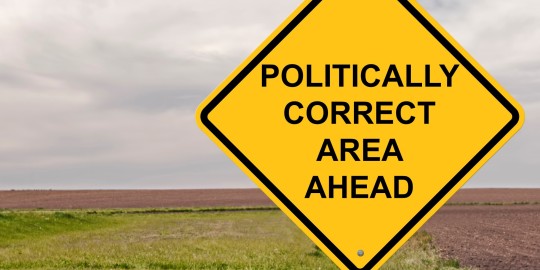
What is digital citizenship? Well, being a citizen of a country means you have rights, entitlements and responsibilities but with it comes an even larger, sought after feeling for many - a sense of security and belonging. So what then is digital citizenship?
According to Common Sense Media (2017), and as summarised in the video below, digital citizenship is:
· A way of thinking online
· A way of being online
· A way of acting online
· Thinking critically
· Being safe
· Acting responsibly
https://www.youtube.com/watch?v=toK_BAYnjoU
The main message that stood out in the video for me was: “The digital world is a big part of the real world.” I honestly don’t think there are many people in the ‘real world’ who aren’t a digital citizen (even if they say otherwise).
Although social media platforms are commonly used for personal promotion, as Young (2010, p. 203) asserts, the rise of the internet is also changing the face of how election news and “news journalism and political communication” are delivered and in turn received by audiences (or digital citizens). With that in mind, I can most definitely relate to Young (2010, pp. 203-204) in that I too am a ‘heavy internet user’ and rely mostly on the internet for my news. I find it easier to scroll on Facebook and stop when a headline catches my eye, than to listen to a whole lot of talking on the TV or radio in the hope I find something worth listening to. In this fast-paced world we live in today, only paying attention to the news pieces you find entertaining or that which will have a direct impact on your life, cuts down (or out) the vast amount of content deemed ‘newsworthy.’
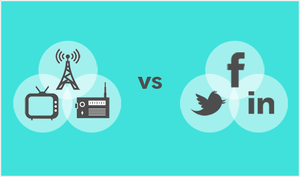
When considering politics and social media, the internet is an integral part of the process, particularly when it comes to elections. Young (2010, p. 204) evidences some interesting statistics from detailed research carried out by the Pew Research Centre in the US. “The use of the internet for political purposes was comparatively advanced” and it was discovered “that nearly three quarters (74 per cent) of American internet users went online during the 2008 presidential election to take part in, or get news and information about, the campaign.” As Young (2010, p. 204) states, “this was 55 per cent of the entire adult population.” Over half. I reiterate, the internet (and digital communities) are an integral part of politics and civil cultures in the world today.
References
Common Sense Media 2010, What is Digital Citizenship?, 11 October 2017, viewed 26 January 2018, <https://www.youtube.com/watch?v=toK_BAYnjoU>.
‘From newspapers to no paper: Social media as a news source’ [image], in ISYS6621: Social Media and Digital Business 2015, From newspapers to no paper: Social media as a news source, Social Media and Digital Business, viewed 26 January 2018, <https://isys6621.com/2015/10/11/from-newspapers-to-no-paper-social-media-as-a-news-source/>.
‘Politically correct area ahead’ [image], in Surversive Influence 2016, Was Jesus Politically Correct?, Surversive Influence, viewed 2 February 2018, <http://subversiveinfluence.com/2016/11/was-jesus-politically-correct/>.
Young, S 2010, 'News, political reporting and the internet', Cambridge University Press, Ebook Central (ProQuest)
0 notes
Text
Blog 2 - Let’s Face(book) the truth once and for all!
Social media platforms, such as Facebook, Instagram, YouTube, and Twitter (to name but a few) have fast become a massive part of our everyday lives. But what is meant by the term platform? When considering the context of the word in terms of the Oxford English Dictionary’s 15 different uses, Gillespie (2010, pp. 349-350) narrows it down to the following connotation: “a raised level surface designed to facilitate some activity that will subsequently take place.” This activity that takes place, in my opinion, could further be defined as ‘our everyday lives’ in that we are all undoubtedly part of what Boyd (2014, p. 71) refers to as “a cohort who is always on.” Even though we may appear to live active and busy (physical) lives, we somehow and increasingly, always seem to find the time to nurture and groom our own online presence. This is so easy to do when we are readily equipped with social media and communication devices that can be used as tools on which to manipulate our “social self-presentation” (McCosker & Wilken, 2014, p. 292). With that in mind, I personally feel that all the social media platforms available to us encourage, and sometimes force, us to paint a picture (accurate or not) of who we would like society to believe we are.
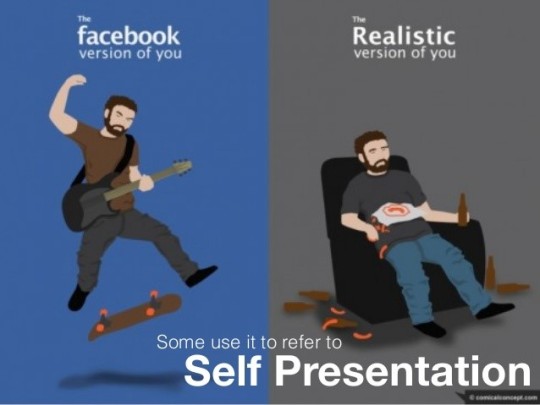
It is safe to say we single out the various social media platforms we choose to utilise according to their affordances; a key term for forming a basic understanding and analysis of social media platforms and the relationships that exist between technology and its users (Bucher & Helmond 2016, p. 3). Facebook, for example, and again in my opinion, approximates the natural will for close relationships and human interaction because through Facebook we are able to stay close to those close to us (either physically or emotionally) and feel that sense of community. If, according to Siapera (2012, p. 202), Facebook users exceed 400 million, that might explain why the question has been raised:
If you don’t have a Facebook account, do you even exist?
What would you do in a case like this? https://youtu.be/GEWnXmDfVZg
It would seem that social media platforms, and in essence our devices, are increasingly becoming who we are (or aren’t). They also seem to play a huge role in how we shape our social, political, economic, and even community experiences. We can be who we want to be, when we want to be, and even choose how long we want to be it for. With all the different platforms available to us, it is apparent the internet is our ever growing stage and essentially, the world is our oyster… as long as you have a Facebook account.
References
Boyd, D 2014, 'Participating in the always-on lifestyle', in M Mandiberg (ed) The Social Media Reader, NYU Press, pp. 71-76.
Bucher, T & Helmond, A 2016, The Affordances of Social Media Platforms, In The SAGE Handbook of Social Media, edited by Jean Burgess, Thomas Poell, and Alice Marwick, SAGE Publications Ltd, London and New York.
Comic Relief 2017,Anti Social – A Modern Dating Horror Story |Comic Relief Originals, viewed 6 December 2017,https://youtu.be/GEWnXmDfVZg
Gillespie, T 2010, Tarleton Gillespie on The Politics of Platforms, Berkman Center for Internet & Society, viewed 5 December 2017, <http://cyber.law.harvard.edu/interactive/events/luncheon/2010/01/gillespie>.
McCosker, A & Wilken, R 2014, 'Social Selves', in Cunningham & Turnbull (eds), The Media & Communications in Australia, Allen and Unwin pp. 291-295.
Siapera, E 2012, 'Socialities and Social Media', in Understanding New Media, Sage, London, pp. 191-208.
‘The pictures we paint on social media’ [image], in meco6936, self-presentation in social media, meco6936, viewed 5 December 2017, <https://meco6936.wordpress.com/2016/04/21/self-presentation-in-social-media/>.
9 notes
·
View notes
Text
Blog 1 - Do you ‘like’ to be popular?
As humans we have, for centuries, always sought that sense of belonging, that sense of being a part of something meaningful, that sense of community. But as the world evolves, and we as humans evolve, so too have communities evolved into what Swinburne Online (2017) refers to as:
Virtual communities
Smart mobs
Digital communities
Networked publics
Digital society
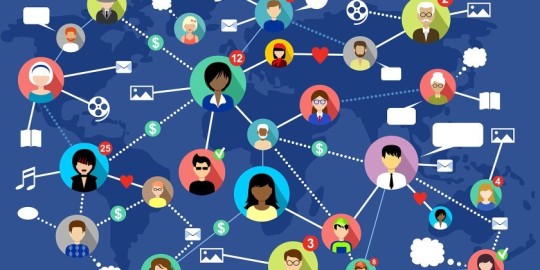
But is this changing how we interact with our fellow humans? Are we so busy “managing the aspects of ourselves that we make accessible to others” that we, in the process, not only create new opportunities but also new anxieties? (Wilken & McCosker 2014, p. 292). In my opinion, these new anxieties may well be in the sense that we are fast losing touch with how to have real time conversations and ‘hands on’ relationships with fellow humans. Not that long ago proximity was the deciding factor on how, and with whom, we socialised (Siapera 2012, p. 191). We met up with people with similar interests, in our immediate environments, and sustained our friendships through regular face-to-face contact (Siapera 2012, p. 191). Closeness was thought of in the physical sense rather than the virtual sense and popularity was gauged on how full your social diary was and not by how many ‘likes’ you received on your latest social media post.
This very topic is summed up quite nicely in this video: https://youtu.be/-Fm5DVpCmfE
It would seem that today society is far more interested in how many ‘friends’ someone has on Facebook, or how many ‘followers’ they have on Instagram or Twitter (Siapera 2012, p. 191). But how many of these so-called friends are true friends? And how many of these so-called ‘followers’ actually follow you because they feel a deep human connection to the content you share?
That being said, one also has the freedom to dump their online ‘friends’ and to some degree, their online accountability and opt for anonymity. When examining online anonymity, Van der Nagel (2013) feels it offers valuable insight into the types of behaviour some individuals would prefer to keep separate from their identity. Such behaviours might be of an offensive nature, illegal, considered immoral or experimental, or they could be sexual, embarrassing, or simply private (Van der Nagel 2013). By choosing anonymity, some see this as choosing freedom; “freedom of speech, freedom from surveillance, and freedom from being judged on one’s gender, status, age, or appearance” (Van der Nagel 2013). Is this not what we once sought in a physical sense in our close-knit and proximal communities? Definitely worth thinking about.

It is certainly embedded deep within our social selves to seek out that sense of community and belonging. But some find their sense of belonging in constantly striving to increase their number of ‘friends’ and ‘followers’ and some find it in hiding behind an anonymous mask of who they would like to be. Nonetheless, digital communities are on the rise, there is something for everyone, and it would certainly appear they are here to stay.
References
ABC News 2015,Instagram Star Essena O'Neill Explains Why She Quit Social Media, viewed 6 December 2017,https://youtu.be/-Fm5DVpCmfE
‘Digital communities’ [image], in Nomad Projects 2016, Best resources: 8 communities for digital nomads, Nomad Projects, viewed 5 December 2017, <http://blog.nomadprojects.io/best-resources-top-communities-for-digital-nomads/>.
McCosker, A & Wilken, R 2014, 'Social Selves', in Cunningham & Turnbull (eds), The Media & Communications in Australia, Allen and Unwin pp. 291-295.
‘Online anonymity’ [image], in Medium 2015, Anonymous on the internet, Medium, viewed 5 December 2017, <https://medium.com/@dahanese/anonymous-on-the-internet-8d8fbac80ccc>.
Siapera, E 2012, 'Socialities and Social Media', in Understanding New Media, Sage, London, pp. 191-208.
Swinburne Online 2017, ‘Week 1: Introduction to digital communities and social media platforms’, MDA20009, Digital Communities, learning materials on Blackboard, Swinburne Online, December, viewed 5 December 2017.
van der Nagel 2013, 'Faceless Bodies: Negotiating Technological and Cultural Codes on reddit gonewild', Scan Journal of Media Arts Culture, vol. 10, no. 2, Macquarie University.
0 notes
Text
Social Networking Site - Facebook
Facebook approximates the natural will for close relationships and human interaction because through Facebook we are able to stay close to those close to us (either physically or emotionally) and feel that sense of community. It also shapes who we are (or in some cases, would like to portray) to society - either we are who are or we paint a picture of who we would like society to believe we are. All of this in turn nourishes our social capital - we feed the benefits we seek from having these associations and online/offline profiles.
1 note
·
View note
Text
Ok, I’m new to the blogging game. Bear with me.
3 notes
·
View notes